#Cornish Myths
Link
Helen Dunmore’s beautiful children’s novel, Ingo creates a beautiful and enchanting world that draws on traditional British folklore, and the authors own imagination to create a gripping novel. The story begins with protagonist, Sapphy, and her father, Mathew Trewheller, in a church looking at a carving of a mermaid. This carving does actually exist and can be found in the local church in Zennor, a seaside village in Cornwall. In the novel, Mathew is telling his daughter about the local Cornish legend of the Zennor mermaid.
The myth of the Zennor mermaid tells the story of a beautiful young maiden who would attend church at Zennor. Despite the years passing her beauty never faded and she never grew older. Eventually, she grew enchanted with a young man from the church choir, said to have the sweetest voice in the village, and he grew enchanted with her in return. One day, he followed her home and was never seen again. The mystery of his disappearance would have continued forever, were it not for a ship dropping anchor in a nearby cove. The young maiden appeared as a mermaid and asked the sailors to remove their anchor, as it was blocking the door to her home and she could not return to her children and husband. The husband was the young chorist. And according to legend, his name was Mathew Trewheller.
Keep Reading
#Ingo#Mythos#Mythos Reviews#Mythology#Myths and Legends#Book Reviews#Book Recs#Children's Books#Fantasy Books#Mermaids#Sapphy#Mathew Trewheller#Cornwall#Cornish Myths#Mythos Articles#Zennor#Zennor Mermaids
12 notes
·
View notes
Text

Maybe fiendish, maybe friendly, knockers are mine-dwelling earth spirits of Cornish folklore.
Belief in the fellows followed Cornish immigrants out of Cornwall, lasting up into the mid-20th century.
#BriefBestiary#bestiary#digital art#fantasy#folklore#legend#myth#mythology#knocker#tommyknocker#fairy#faerie#fae#fae folk#knacker#cornish mining#mining folklore#mining fairy#cornish folklore
11 notes
·
View notes
Text
ech. might consolidate #arthuriana and #the mabigonion under #ancient britannia or #ancient britain to match my other tags of #ancient egypt, greece, italy, and china.
#my stuff#that way i can put irish/scottish stuff there as well. maybe bretonnic or cornish stuff if i ever learn abt that.#uh also. its ancient [name] so i can put both mythology/folklore and archaelogy/history stuff too#based off the greek tradition of the myths existing in ''the distant past''#also kinda like the xia dynasty of china
0 notes
Text
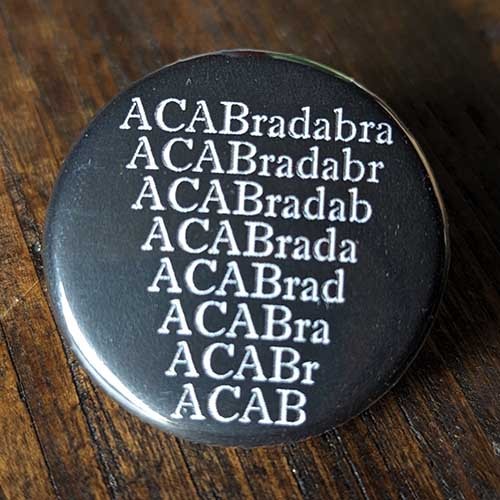



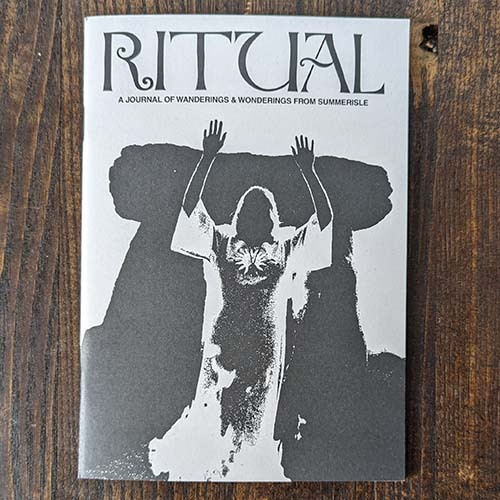

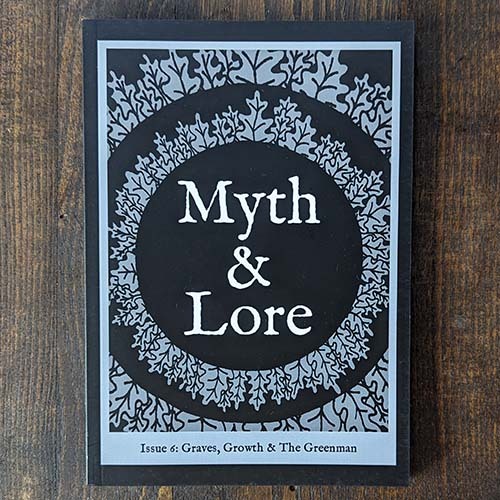



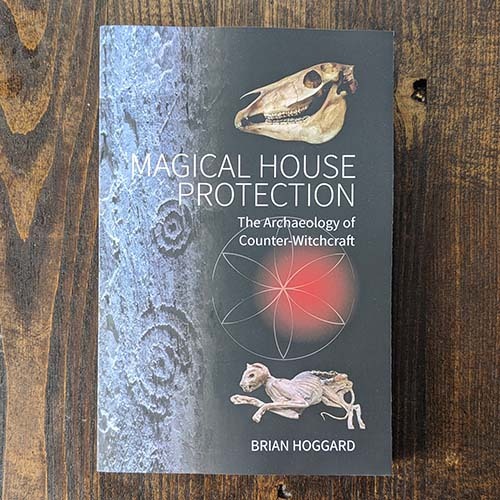
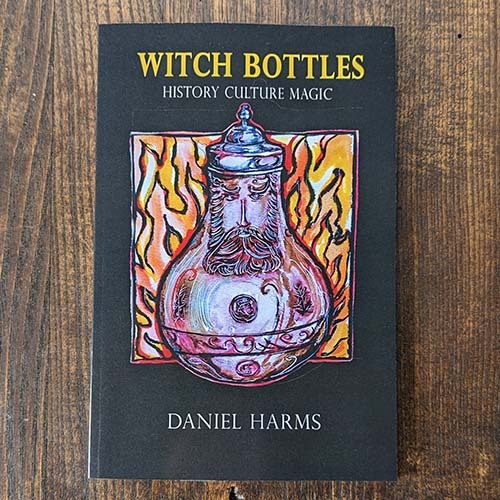
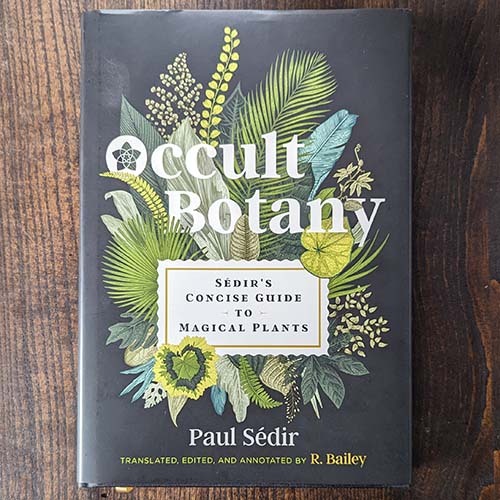
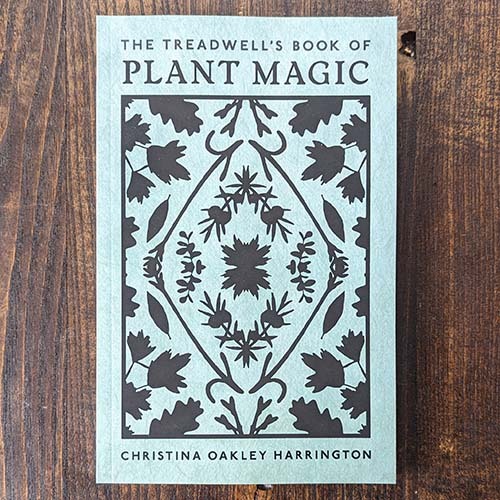
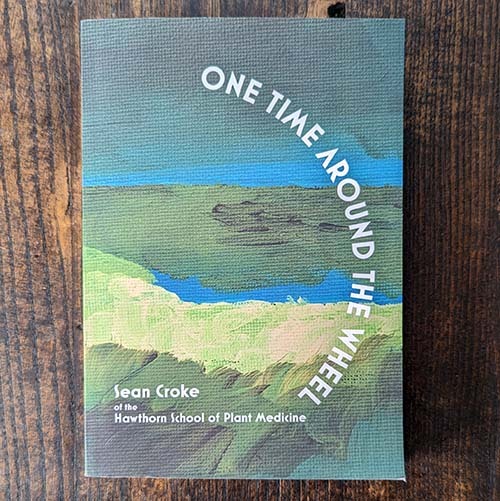
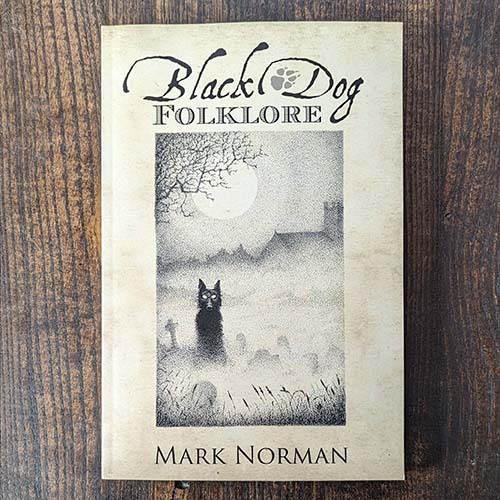
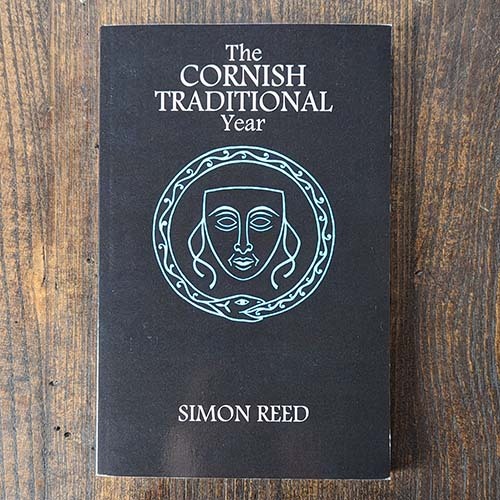


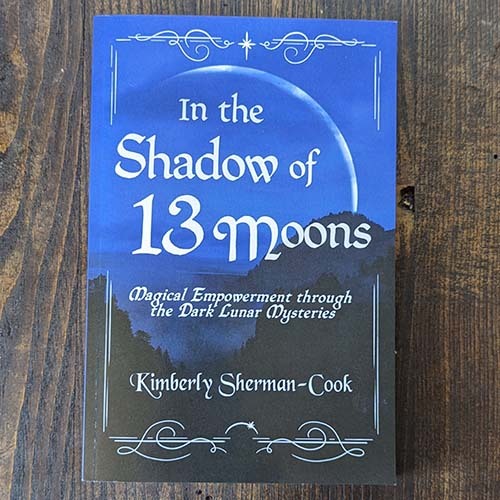

It's been a busy vending season! I finally got a chance to update the website with these new buttons, zines, books, and organizers!
Portland Button Works & Spiral House Shop September 22, 2023! - New in Stock for Autumn!
BUTTONS
ACABradabra
Stealing From Witches Is Bad For Your Health
Easily Distracted by Plants
Easily Distracted by Cats
ZINES
Ritual (from the folks at Weird Walk comes a fanzine about The Wicker Man)
Frogs Teeth Field Guide Issues 1, 2, 3
Myth & Lore Issues 1, 2, 3, 4, 5, & 6
SLINGSHOT ORGANIZERS
Small pocket sized
Small spiral bound
Large spiral bound
BOOKS
Sigil Magic: For Writers and Other Creatives by T. Throrn Coyle
Magical House Protection : The Archeology of Counter-Witchcraft by Brian Hoggard
Witch Bottles: History, Culture. Magic by Daniel Harms
Occult Botany: Sédir's Concise Guide to Magical Plants by Paul Sédir
The Treadwell's Book of Plant Magic by Christina Oakley Harrington
One Time Around The Wheel by Same Croke
Black Dog Folklore by Mark Normal
The Cornish Traditional Year by Simon Reed
From Granite to Sea: The Folklore of Bodmin Moor and East Cornwall by Alex Langstone
The Kitchen Witch: Your Complete Guide to Creating a Magical Kitchen with Natural Ingredients, Sacred Rituals, and Spellwork
In the Shadows of 13 Moons: Magical Empowerment through the Dar Lunar Mysteries by Kimberly Sherman-Cook
Mountain Magic: Explore the Secrets of Old Time Witchcraft by Rebecca Beyer
#ACAB#witch shop#witch store#witchblr#witchcraft*#witch books#magic books#green witchcraft#pagan#slingshot organizers#traditional witchcraft#folk magic#treadwells#plant magic#sigils#sigil magic#witch bottles#magical protection#black dogs#shadow work#conish magic#cornish witchcraft#kitchen witch#gemma gary#troy books#wickerman#wicker man#myth & lore#myth and lore#witchy zines
415 notes
·
View notes
Note
what fae like qualities do you believe aaravos has?
I don't know enough about the fae to say definitively (I've read some works depicting fae, such as The Faerie Queene by Edmund Spenser from the 1500s, A Midsummer Night's Dream by Shakespeare, some other folklore myths) but I try to stay away from sources that are too Christianized for stuff that's more Pagan / northern and western Europe and the 1500s has plenty already.
When in doubt I'm loosely using wikipedia / old class notes for reference but if there's a site or source I think is cool and helpful I'll note it down below.
There is some that are generally common knowledge, such as:
Fae being mischevious tricksters with very particular phrasing. They don't tend to often be outright malevolent as a motivation, but often do harm to humans anyway either due to ignorance or blue-orange morality.
Blue-orange morality (for those who don't want to watch a video) is basically when a creature or being does not have a morality that operates that we would define it (on a spectrum of ethical right or wrong actions per consequence or intention). A good example is the spirits from ATLA (not LOK) or One-One from Infinity Train. He's a helpful little robot guy and he loves his friends, but he is ultimately bound and operates within the Train's rules. It's not that he can't deter from the Train's rules without distress or that he doesn't want to, it's that deterring from the Train's rules just doesn't compute to him as even a thing to do. He's operating on his own unique level and it's what turns him from a S1 ally to a S2 antagonist (but not villain).
There tends to be an emphasis on names, deals, and exchanges, i.e. if a Fae says "Can you give me your name?" and you tell them it, they own it and you by extension now, stuff like that. Also have a tendency to give humans they like, or humans who do nice things for them, gifts (whether it's actually a beneficial gift is sometimes debatable).
The Fae often lure humans away from the Ordinary Realm into the Faerie Realm, where time and magic work differently. Sometimes this means being whisked away, or unknowingly stepping through fairy rings. This can include both the Seelie and the UnSeelie Court (Scottish folklore).
Examples of the Fae in popular culture include Spirited Away (don't eat the food!), changeling myths (faerie leaving their babies in place of your own, nowadays seen as a connection to old stories of Autistic individuals), arguably Coraline (film and book), will-o-the-wisps, and other figures in Welsh, Cornish, and broad European folklore, etc.
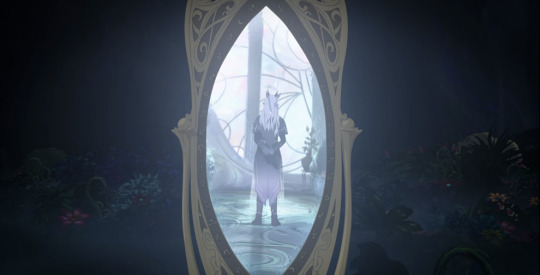
Variants / similarities include huldufolk (Icelandic and Faroese folklore), sirens (Greek), kelpies (Scottish), etc. Over time Christian (bc of course) associations have also been applied as both demoted angels and tempting devils, but that sort of works given one of Aaravos' most prominent comparisons is Lucifer, and Prometheus, who were as crafty and clever as they come.
Basically:
Aaravos emphasis (or lack thereof) regarding his name and the general mystery surrounding it — "My name would mean nothing to you" even in the face of Viren's demands
We see the emphasis on phrasing given that it's been stated by the crew that Aaravos never lies, but we know he purposefully obscures and omits information
Entering into deals and exchanges with humans, giving them gifts and promises (Ziard's staff, Viren's rule for himself and Viren's life for Claudia)
Him seducing Viren yes I said it / everything with Sir Sparklepuff tbh
Fae can also sometimes set trials to pass or tasks for people to fulfil, similar-ish to Aaravos giving Viren a little fetch quest for them to communicate / "Those who fail tests of love are simple animals."
We don't know what Aaravos actually wants, exactly, or why, but given the indifference of the other Startouch elves to humanity's plights (and the fact they've let Aaravos wreak havoc and have never stepped in to stop him) it's a far bet their long, illustrious lives have given them a decidedly warped morality, and that Aaravos is pretty indifferent to other people's immense suffering at this point, too
His mirror realm being its own sort of faerie realm that he can bring Viren in and out of
Aaravos having multiple names and monikers — the Fallen Star, the Midnight Star, one of the Great Ones — much the way the Fae folk have many — the Good Neighbours, the Fair Folk, the Kind Ones, the Wee Folk, the Others (citation).
This isn't as much of a thing but all the nature motifs surrounding Aaravos (Elarion as a flower, the nature-esque patterns on the box that held the Key and that match the key, the flower and vine emulations on his mirror).


#tdp#the dragon prince#aaravos#tdp aaravos#requests#analysis series#analysis#thanks for asking#anonymous#tdp meta
33 notes
·
View notes
Text
REX BELLUM, ARTHUR GERNOW

[ID: A looping gif of waves at sea. before the viewer are smaller, daker blue waves, while behind lighter blue waves with white crests crash against once another. The scene is peaceful, yet chaotic.]
To the once and future king. Arthur, the vicious in battle and kind pagan warlord.
Dydh Da and welcome to my devotional blog to Arthur 'paganus' as I call him; essentially worshipping the religious pagan version of Arthur. Let this be a collection and discussion of essays, devotional works, personal experiences, Arthur in myth, and Arthur's various manifestations in Brythonic and greater Celtic cultures. This will largely be a focus on Kernow, as I am part Cornish, but I will include other regions featuring him such Wales, Yorkshire, Brittany, and more.
Along with this menagerie, veneration of brythonic deities and brythonic polytheism. This blog includes both Arthur the hero and Arthur as a deity, an in-between, and Arthur as a faery.
May the dead king of war rest in his grave, let us carve a future for ourselves that he will never have to return to fight for. Dead men should rest, but let it be known for him to inspire, and for our darkest hour, he shall return.
ko-fi | links directory | blog submissions | morgan's carrd.co
#dragonis.txt#king arthur worship#brythonic polytheism#brythonic paganism#king arthur deity#celtic polytheism#pagan#paganism#paganblr#celtic paganism#celtic mythology
11 notes
·
View notes
Text
tagged in a thing by @theinkthief!! it took me ...several weeks to actually do it, but I Have been thinking about it the entire time
rules: list ten books that have stayed with you in some way, don’t take but a few minutes, and don’t think too hard - they don’t have to be the “right” or “great” works, just the ones that have touched you.
Six of Crows, Leigh Bardugo - this is the book that I spent my whole life looking for. it has the most amazing cast of characters, it has heists, it has awesome world-building. i just adore it! It's my favourite ever!
My Name is Morgan, Sophie Keetch - I'm a sucker for mythology, particularly British, and retelling of myths, and I've always loved Morgan le Fay. This book is just awesome, and I adore it and can't wait for the next.
Ninth House, Leigh Bardugo - adult fantasy, love it, it's got awesome magic that feels very realistic, and the protagonist is someone you can actually I identify with, not a chosen one trope, fascinating magic/mythology and plot
SAS: Rogue Heroes, Ben MacIntyre - this is a rabbit hole I fell down, and I'm so glad I did. Met some great people talking about this book, and the show is just incredible too
The Thief Lord, Cornelia Funke - first proper novel I remember reading, started me off reading properly for fun. could actually relate to characters when I read it bc they were kids. Venice + magic + adventures - what more could you need?
Ingo, Helen Dunmore - mermaids, Cornish folklore, got me into fantasy in general (surprisingly not HP that got me into fantasy), still love it even now.
The Secret Countess and A Company of Swans, Eva Ibbotson - couldn't decide between them, both historical fiction and got me into the genre, love them, there's something very tender and lovely about them Eva Ibbotson's books
The Hunger Games, Suzanne Collins - These books changed me, not sure how, not sure why, I just know they did. grown up themes that were really well-presented and makes you look at the world differently
Starcrossed, Josephine Angelini - modern Greek myths, scions/children of Greek myth bloodlines, interesting plot, enemies to in love to your classic Greek myth tropes
Alex Rider Series, Anthony Horowitz - I wasn't going to pick just one (though my favourites are Skeleton Key and Russian Roulette), second proper novel I remember reading, got me into reading an entire series of books
I'll tag a few people, but if anyone wants to do it, feel free
@regseekings @just-barrow @roseszirnheld @gyunikum @edward-little @crunchywrites @dukesoakedoats @wearebackbagels @homeahoy @revolutionarybillfraser
16 notes
·
View notes
Text
Deep dives into folklore: Arthurian legends pt 2

The Arthurian legends have captivated imaginations for centuries, weaving a tapestry of chivalry, romance, and heroic quests. While King Arthur himself remains a figure shrouded in myth and mystery, many of the stories associated with him are said to have their roots in the rugged landscapes of Wales. In the second part of this deep dive, we'll embark on a journey to explore modern-day locations in Wales that are believed to be the basis for some of the most enduring tales of King Arthur and his knights.
Tintagel Castle, Cornwall and Dinas Emrys, Gwynedd
Our exploration begins with Tintagel Castle in Cornwall and Dinas Emrys in Gwynedd, both of which are associated with Arthurian legends. Tintagel Castle, perched dramatically on the Cornish coast, is believed by some to be the birthplace of King Arthur. While this claim remains unverified, the castle's dramatic setting and historical significance make it a must-visit for Arthurian enthusiasts. (or at least those with the patience to walk up and down a lot of stairs, trust me, ive been there)
In contrast, Dinas Emrys, a hill fort in Snowdonia, is connected to Arthurian lore through the legend of the red and white dragons. According to the legend, the future King Vortigern sought to build a fortress at Dinas Emrys, but his efforts were thwarted by the discovery of two battling dragons—one white and one red. A young Merlin, believed to have been a wizard and advisor to King Arthur, interpreted this as a prophecy of the conflict between the Britons (represented by the red dragon) and the Saxons (represented by the white dragon).
Caerleon, Newport
Caerleon, a picturesque town near Newport, is often identified with the ancient city of Camelot. In Arthurian legends, Camelot was the legendary court of King Arthur and the Knights of the Round Table. While there is no concrete historical evidence linking Caerleon to Camelot, the town's Roman ruins, including an impressive amphitheater and fortress, add to its mystique. Visitors can explore the remains of Isca Augusta and imagine the grandeur of Arthur's court.
Arthur's Stone, Gower Peninsula
On the stunning Gower Peninsula in South Wales, you'll find Arthur's Stone, a Neolithic burial chamber also known as Maen Ceti. Legend has it that this massive stone was thrown onto the peninsula by King Arthur himself. While this may be a whimsical embellishment, the site's ancient history and striking location overlooking the landscape make it a captivating place to visit.
Llyn Llydaw, Snowdonia
Llyn Llydaw, a serene glacial lake nestled beneath the towering peaks of Snowdonia, is associated with the Lady of the Lake—a character often featured in Arthurian legends. According to the tales, it was here that the Lady of the Lake gave King Arthur the legendary sword Excalibur. While this might be more legend than history, the lake's tranquil beauty and the surrounding wilderness offer a sense of the mystical that resonates with Arthurian themes.
Glastonbury Tor, Somerset
Although not in Wales, Glastonbury Tor in Somerset, England, is closely connected to Arthurian legends and deserves a mention. The Tor is said to be the location of the mythical Avalon, where King Arthur's body was laid to rest after his death. Many believe that the Tor's enigmatic terraces and the nearby Chalice Well Gardens are steeped in the Arthurian legacy, making it a significant pilgrimage site for enthusiasts of the legends.
Conclusion
The modern-day locations in Wales, along with some neighboring areas, offer a rich tapestry of settings and landmarks that have become deeply ingrained in the Arthurian legends. While the historical accuracy of these associations may remain elusive, the charm of these places is undeniable. Whether you're a fervent Arthurian scholar or a casual admirer of legends, exploring these sites provides a tangible connection to the enduring stories of King Arthur and his knights, enriching our understanding of this captivating chapter in Welsh and British folklore.
Taglist (reply or reblog to be added):
@axl-ul @crow-flower @thoughts-fromthevoid @alderwoodbooks @harleyacoincidence @tuberosumtater @sonic-spade @theonlygardenia @holymzogynybatman @nulliel-tres
#writeblr#writers of tumblr#bookish#writing#booklr#fantasy books#creative writing#book blog#ya fantasy books#ya books#deep dives into folklore#merlin bbc#bbc merlin#folklore#books#literature#merlin#king arthur#merlin emrys#arthur pendragon#guinevere#morgana pendragon#gaius
10 notes
·
View notes
Text
Novel Syllabus 2024
This coming year I think I'm going to be on here more often than I am on twitter or elsewhere, and as part of that, I'm going to start documenting the process of writing my novel more actively. I want to return to/resurrect the momentum and energy I had while writing the first draft and be more intentional about setting aside time to work, even when it's difficult. Below are my writing goals for the coming year as well as my reading list of texts for inspiration, genre/background research, comps, etc. Would welcome any suggestions of texts (any genre/discipline) pertaining to Antigone, death & resurrection, Welsh and Cornish myth and folklore, ecology & environmental crisis, and the Gothic.
Writing Goals
Reach 50k words in draft 2 overall
Finish a draft of Anna's timeline
Finish a draft of Jo's timeline
Polish & submit an excerpt for the Center for Fiction Prize
Reading
* = reread
Sci-Fi, Fantasy, & The Apocalyptic
The Memory Theater (Karin Tidbeck)
Who Fears Death (Nnedi Okorafor)
Urth of The New Sun (Gene Wolfe)
Slow River (Nicola Griffith)
Dream Snake (Vonda McIntyre)
Black Leopard, Red Wolf (Marlon James)
Notes from the Burning Age (Claire North)
Invisible Cities (Italo Calvino)*
Frankenstein (Mary Shelley)*
The Last Man (Mary Shelley)
The Drowned World (J.G. Ballard)
Strange Beasts of China (Yan Ge, trans. by Jeremy Tiang)
City of Saints and Madmen (Jeff VanderMeer)
Freshwater (Akweke Emezi)
The Glass Hotel (Emily St. John Mandel)
Pattern Master (Octavia Butler)
Sleep Donation (Karen Russell)
How High We Go in the Dark (Sequoia Nagamatsu)
The Magician's Nephew (C.S. Lewis)*
The Golden Compass (Phillip Pullman)*
The Green Witch (Susan Cooper)
The Tombs of Atuan (Ursula K. Le Guin)
Black Sun (Rebecca Roanhorse)
Gideon the Ninth (Tamsyn Muir)
Lives of the Monster Dogs (Kirsten Bakis)
Brian Evenson
Sofia Samatar
Connie Willis
Samuel Delaney
Jo Walton
Tanith Lee
Retellings
A Wild Swan (Michael Cunningham)
Til We Have Faces (C.S. Lewis)
Gingerbread (Helen Oyeyemi)
Circe (Madeline Miller)
The Owl Service (Alan Garner)
Literary Myth-Making, Mystery, and the Gothic
Nights at the Circus (Angela Carter)
Frenchman's Creek (Daphne Du Maurier)
Possession (A.S. Byatt)*
The Game (A.S. Byatt)*
The Essex Serpent (Sarah Perry)
Wuthering Heights (Emily Brontë)
The Secret History (Donna Tartt)*
The Wild Hunt (Emma Seckel)
King Nyx (Kirsten Bakis)
The Name of the Rose (Umberto Eco)
The Lottery and Other Stories (Shirley Jackson)
Beloved (Toni Morrison)
The Night Land (William Hope Hodgson)
Interview with a Vampire (Anne Rice)*
Sexing the Cherry (Jeanette Winterson)*
Night Side of the River (Jeanette Winterson)
Bad Heroines (Emily Danforth)
All the Murmuring Bones (A.G. Slatter)
The Path of Thorns (A.G. Slatter)
Gormenghast (Mervyn Peake)
Prose Work, Perspective, and Stream of Consciousness
The Chandelier (Clarice Lispector)
The Waves (Virginia Woolf)*
The Years (Virginia Woolf)
The Intimate Historical Epic / Court Intrigues
Wolf Hall (Hilary Mantel)*
Menewood (Nicola Griffith)
Dark Earth (Rebecca Stott)
A Place of Greater Safety (Hilary Mantel)
Research
The Mabinogion (trans. Sioned Davies)
Le Morte D'Arthur (Thomas Malory)
The Collected Brothers Grimm (Phillip Pullman)
Angela Carter's Collected Fairytales
Mythology (Edith Hamilton)
Underland (Robert Macfarlane)
The Wild Places (Robert Macfarlane)
Wildwood (Roger Deakin)
Vanishing Cornwall (Daphne Du Maurier)
Lonely Planet: Guide to Devon & Cornwall
A Traveler's Guide to the End of the World (David Gessner)
The Lost Boys of Montauk (Amanda M. Fairbanks)
A Cyborg Manifesto (Donna J. Harraway)
A Treasury of British Folklore (Dee Dee Chainey)*
The First Last Man: Mary Shelley and the Postapocalyptic Imagination (Eileen M. Hunt)
Antigone's Claim (Judith Butler)
Theories of Desire: Antigone Again (Judith Butler)
Ecology of Fear (Mike Davis)
7 notes
·
View notes
Text

Grotesque Cornish fae, spriggans guard treasure and they don't take kindly to anyone who may have slighted them in the least.
Are they related to giants of old? Perhaps they are.
#BriefBestiary#bestiary#digital art#fantasy#folklore#legend#myth#mythology#fae#faerie#fairy#spriggan#cornish folklore#cornish fairy#monster#giant's ghost#ghost giant#giant#ghost
4 notes
·
View notes
Text
The Once and Future King
It’s no secret that sylvaris borrow a lot to celtic myths and legends, but most specifically to Arthurian mythology. I could (should) put more thought in this and provide a full-length essay on every parallel in game (now that I’ve noticed the pattern, you can be sure I’ll be looking for them and dig out and examine every little piece of lore to see how it fits into the arthurian legend!) but I’ll keep it simple and focus on Trahearne only.
Huge revelation to come :
Trahearne is King Arthur.
They bear a weapon that was never forged, Caladbolg, gifted by a magical being.
“But, Arthur’s sword is Excalibur, we all know that!”
In some versions of the myth there are two swords - the sword in the Lake, and the sword in the stone. Excalibur and Caliburn. In other versions of the myth, the two swords are one and the same.
Excalibur or Caliburn, it matters little, as both names derive from the same root. Caledfwlch in welsh. Calesvol in Middle Cornish. Caladbolg in Irish.
Arthur recieves his sword as a gift from the Lady of the Lake. Trahearne from the Pale Tree.

They are burdened with an impossible task.
For Arthur, unifying Britain and finding the Grail. For Trahearne, unifying the Pact and restoring Orr. One fails, the other succeeds. (Yay for Trahearne!)
They lay mortally wounded against a tree, surrounded by a few of their friends.
Arthur lays against a tree, mortally wounded by his son, Mordred. Trahearne lays entangled in vines, possessed and mortally wounded by his grandfather, Mordremoth.

Their dying breaths are for their swords.
Arthur asks his knight or Merlin (depending on the version) to toss it into the Lake whence it came. Trahearne requests his sword to kill him and free him from Mordremoth.
They are taken by the mist, to Avalon, where they rest until the world needs them and they awaken.
Arthur is taken to the Isle of Avalon (meaning the Isle of apple trees), to take his final rest, or recover till Britain needs him. Trahearne is still found in Caer Aval (meaning the Castle of apple trees) after the events of Heart of Thorns... waiting for the moment he may return, perhaps ?
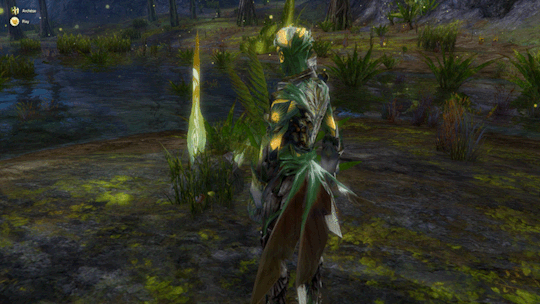
These are the few parallels I gathered since yesterday, but I’m certain there will be more. Feel free to add to the list if you noticed some!
#trahearne#gw2 trahearne#heart of thorns spoilers#heart of thorns#arthurian myths#arthurian legend parallels#please don't come after me because i used a gif of his death it's already painful enough as it is! T_T
215 notes
·
View notes
Note
Man... why is it so hard to find normal Gaelic pagans?
Dude. Tell me about it. I suffer everyday.
If I had to guess though—my guesses would be:
1. The Isles were Christianized earlier than, say, Scandinavia, and big swathes of the Slavic regions, so there were less years of recorded pagan practices that we have knowledge of extending into the beginning and middle of the Medieval period.
2. For one reason or another, there’s been a big revival of interest in Norse/Germanic practice. This isn’t necessarily a recent thing, either. You had Wagner heavily leaning into Germanic myth and aesthetics with his Ring Cycle. You had, whether you agree with him or not, Adolf Hitler and his men rejecting the church’s hold on Germany and reviving interest in Germanic belief (what Adolf Hitler and those closest to him personally believed is a whole other can of worms and too long for this post.) the West is fascinated with Norse-Germanic belief and “Viking” aesthetics because I think in many people’s view, the Norse were the last holdout against the tide of Abrahamism in Europe (which unfortunately does a massive disservice to the Slavs and Balts who often held out for much longer, even until the Soviet period). More recently, you have groups like Wardruna and Heilung and their many copycats rising to popularity. You have (ugh) the show Vikings, which, for better or for worse, brought Norse belief and Viking Age culture back into the public eye. Piggybacking off the popularity of that was Robert Eggers’ masterpiece The Northman. You don’t have a lot of this with Celtic culture, either Islander or continental, because:
3. Protestantism simply put, did not succeed in keeping hold of Scandinavia and the northern parts of Germany like Catholicism did for Ireland, for France. That statement might piss people off, but the difference in how secular Sweden is versus Ireland is pretty staggering. (Yeah, yeah, I know, racial and religious demographics are rapidly shifting and people will ask what about Scotland, what about Wales? It’s complicated.)
4. FUCKINF. WICCIANISM. Gerald Gardner and Rocket Graves, may they suffer for eternity, did untold damage to Islander paganism. Gardner cherry-picked from many European traditions, but he used (cherry-picked) Islander Celtic belief as the glue to hold it together, and mixed that with Thelema, and Khabbalah, which, do I even have to explain why neither of these things have no place in Europe? He and Graves took advantage of the burgeoning pagan revivals and general disillusionment with Christianity people had after WWII. Robert Graves’ The White Goddess is now used as a blueprint for reconstructing Celtic paganism. Despite the fact that he couldn’t back up any of his “research” and couldn’t cite a single source, and that nearly every single academic that studies pre-Christian European belief has rejected it as utter nonsense, I STILL see people claiming to be “Druids” who cite this book. So you have The White Goddess, and Wiccanism/New Age nonsense, which has been bleeding for decades into any genuine attempt at reconstruction. People tend to see the hippie or Earth mother types that flock to this and think. “Yeah, no thanks.”
There are no recent, big budget, well-filmed, well acted movies that depict any of the Irish, Scottish, Welsh, or Cornish (yeah, remember them? Barely any one else does) myth. Almost no one knows how much Celtic blood is in all of Europe. In Greece, in the southern Slavic countries, in Italy, in Switzerland, and the Netherlands and Austria. Bavarians can up to nearly 50% Celt DNA! So can Spaniards! There are no cool depictions of naked Gauls slathered in blue woad hurling themselves at Roman soldiers, ripping their shields apart with their bare hands, running up their shield walls and diving into the fray, racing through Europe in their immaculate chariots. It’s sad. I’d give my right arm to see a Robert Eggers directed movie about that, or about Fion mac Cumhail. The Celts were just as fierce and powerful as any Viking raider you can name, and what do we get? Derry Girls and movies about The Troubles. Which is fine. Ireland in 1900 and more recently was certainly not a boring place to be. But there’s just so much more.
Best we can do, friend, is keep making people of Celtic heritage aware of their history, their people, their gods, and make THAT Celtic history popular in the culture.
Then we get our Robert Eggers Gaul movie.
4 notes
·
View notes
Text




The Story of Old - Folklore Inspirations Part Two
I love folklore and myths so I wove established lore from different cultures into the story. Sedna is an Inuit goddess and Ankou is from Breton/Cornish/Welsh mythology. These two were the inspirations for two of the Old Gods.
27 notes
·
View notes
Text
El Coco
El Coco or Coca (also known as the Cucuy, Cuco, Cuca, Cucu or Cucuí) is a mythical ghost-like monster, equivalent to the bogeyman, found in many Hispanophone and Lusophone countries. It can also be considered an Iberian version of a bugbear as it is a commonly used figure of speech representing an irrational or exaggerated fear. The Cucuy is a male being while Cuca is a female version of the mythical monster. The "monster" will come to the house of disobedient children and make them "disappear".
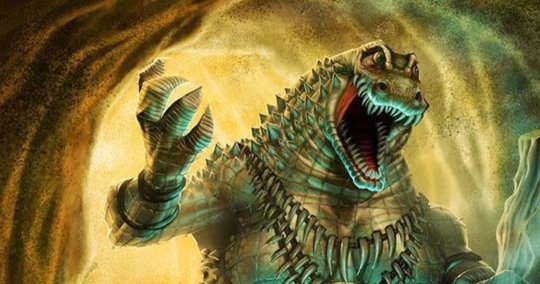
The myth of the Coco, or Cucuy, originated in northern Portugal and Galicia. According to the Real Academia Española, the word coco derives from the Galician and Portuguese côco, which means "coconut". The word coco is used in colloquial speech to refer to the human head in Spanish. Coco also means "skull". The word cocuruto in Portuguese means "the crown of the head" or "the highest place" and with the same etymology in Galicia, crouca means "head", from proto-Celtic *krowkā-, with variant cróca; and either coco or cuca means "head" in both Portuguese and Galician. It is cognate with Cornish crogen, meaning "skull", and Breton krogen ar penn, also meaning "skull". In Irish, clocan means "skull".
Many Latin American countries refer to the monster as el Cuco. In northern New Mexico and southern Colorado, where there is a large Hispanic population, it is referred to by its anglicized name, "the Coco Man". In Brazilian folklore, the monster is referred to as Cuca and pictured as a female humanoid alligator, derived from the Portuguese coca, a dragon.
In Spain, Portugal, and Latin America, parents sometimes invoke the Coco or Cuca as a way of discouraging their children from misbehaving; they sing lullabies or tell rhymes warning their children that if they don't obey their parents, el Coco will come and get them and then eat them.
It is not the way the Coco looks but what it does that scares most. It is a child eater and a kidnapper; it may immediately devour the child, leaving no trace, or it may spirit the child away to a place of no return, but it only does this to disobedient children. It is on the lookout for children's misbehavior from the rooftops; it takes the shape of any dark shadow and stays watching. It represents the opposite of the guardian angel and is frequently compared to the devil. Others see the Coco as a representation of the deceased of the local community.
The oldest known rhyme about the Coco, which originated in the 17th century, is in the Auto de los desposorios de la Virgen by Juan Caxés.
The rhyme has evolved over the years, but still retains its original meaning:
Duérmete niño, duérmete ya...
Que viene el Coco y te comerá
Sleep child, sleep or else...
Coco will come and eat you
The Portuguese lullaby recorded by José Leite de Vasconcelos tells Coca to go to the top of the roof. In other versions of the same lullaby, the name of Coca is changed to that of "papão negro" (black eater), the name of another bogeyman.
Vai-te Coca. Vai-te Coca
Para cima do telhado
Deixa o menino dormir
Um soninho descansado
Leave Coca. Leave Coca
Go to the top of the roof
Let the child have
A quiet sleep
The traditional Brazilian lullaby is as follows, with the Cuca as a female humanoid alligator:
Dorme neném
Que a Cuca vem pegar
Papai foi pra roça
Mamãe foi trabalhar
Sleep little baby
That Cuca comes to get you
Daddy went to the farm
Mommy went to work
Both Brazilians and Portuguese also have a bogeyman version, which sometimes acquires regional colors where the bogeyman (the shape-shifting Bicho Papão is a monster that is shaped by what the child fears most) is a small owl, murucututu, or other birds of prey that could be on the roof of homes at night (in Brazil) or a mysterious old man with a bag who is also waiting on the roof of the house (in Portugal).
Bicho papão
Em cima do telhado
Deixa o meu menino dormir
Um soninho sossegado
Bogeyman
Atop the roof
Let my child have
A quiet sleep
Verses and songs were used in pre-Roman Iberia to transmit history to the younger generations, as told by ancient authors. Sallust said the mothers sang the military feats of the fathers to incite the children to battle. He was later quoted by Servius, who emphasised that it was the role of the mothers to remember and teach the young men about the war feats of their fathers. Silius Italicus added more; he said that the young warriors sang songs in their native language while hitting their shields in the rhythm of the songs and that they were well versed in magic. Strabo, too, commented that history was recorded in verse.
During the Portuguese and Spanish colonization of Latin America, the legend of the Coco was spread to countries such as Mexico, Argentina and Chile.
There is no general description of the cucuy, as far as facial or body descriptions, but it is stated that this shapeshifting being is extremely horrible to look at. The coco is variously described as a shapeless figure , sometimes a hairy monster, that hides in closets or under beds and eats children that misbehave when they are told to go to bed.
Coca is also the name of a female dragon who featured in various medieval celebrations in the Iberian Peninsula. In Portugal one still survives in Monção; she fights in some sort of medieval tournament with Saint George during the Corpus Christi celebrations. She is called Santa Coca ("Saint Coca"), an allusion to the Irish saint, or Coca rabicha ("Tailed Coca"). If she defeats Saint George by scaring the horse, there will be a bad year for the crops and famine; if the horse and Saint George win by cutting off one of her ears with earring and her tongue, the crops will be fertile. Oddly enough, the people cheer for Saint Coca. In Galicia there are still two dragon cocas, one in Betanzos and the other in Redondela. The legend says that the dragon arrived from the sea and was devouring the young women until she was killed in combat by the young men of the city. In Monção, the legend says, she lives in the Minho; in Redondela she lives in the Ria of Vigo. The dragon shared the same name that was given in Portuguese and Spanish to the cog (a type of ship), and although used mainly for trade, it was also a war vessel common in medieval warfare and piracy raids on coastal villages.
The oldest reference to Coca is in the book Livro 3 de Doações de D. Afonso III from the year 1274, where it is referred to as a big fish that appears on the shore: "And if by chance any whale or sperm whale or mermaid or coca or dolphin or Musaranha or other large fish that resembles some of these die in Sesimbra or Silves or elsewhere[.]"
In Catalonia, the Cuca fera de Tortosa was first documented in 1457. It is a zoomorphic figure that looks like a tortoise with a horned spine, dragon claws and a dragon head. The legend says she had to dine every night on three cats and three children. This legend of the Coca can be compared to the one of Peluda or Tarasque.
In Brazil, the Coco appears as a humanoid female alligator called Cuca. She is dressed like a woman with ugly hair and a sack on her back. Cuca appears as the one of the main villains in children's books Sítio do Picapau Amarelo by Monteiro Lobato, but in the books she appears like a powerful witch that attacks innocent children. Artists illustrating these books depicted the Cuca as an anthropomorphic alligator. She is an allusion to Coca, a dragon from the folklore of Portugal and Galicia.
The sailors of Vasco da Gama called the fruit of the Polynesian palm tree "coco". The word "coconut" is derived from their name.
Traditionally in Portugal, however, the coco is represented by an iron pan with holes, to represent a face, with a light inside; or by a vegetable lantern carved from a pumpkin with two eyes and a mouth, which is left in dark places with a light inside to scare people. In the Beiras, heads carved on pumpkins, called coca, would be carried by the village boys, stuck on top of wooden stakes.
The same name [Coca] is given to the pumpkin perforated with the shape of a face, with a candle burning in the inside—this gives the idea of a skull on fire—that the boys on many lands of our Beira carry stuck on a stick.
An analogous custom was first mentioned by Diodorus Siculus (XIII.56.5;57.3), in which Iberian warriors, after the battle of Selinunte, in 469 BC, would hang the heads of the enemies on their spears. According to Rafael López Loureiro, this carving representation would be a milenar tradition from the Celtiberian region that spread all over the Iberian Peninsula.
The autumnal and childish custom of emptying pumpkins and carving on its bark, eyes, nose and mouth looking for a sombre expression, far from being a tradition imported by a recent Americanizing cultural mimicry, is a cultural trait in ancient Iberian Peninsula.
This representation would be related to the Celtic cult of the severed heads in the Iberian peninsula. According to João de Barros, the name of the "coconut" derived from coco and was given to the fruit by the sailors of Vasco da Gama, c.1498, because it reminded them of this mythical creature.
This bark from which the pome receives its vegetable nourishment, which is through its stem, has an acute way, which wants to resemble a nose placed between two round eyes, from where it throws the sprout, when it wants to be born; by reason of such figure, it was called by our [men] coco, name imposed by the women on anything they want to put fear to the children, this name thus remained, as no one knows another.
Rafael Bluteau (1712) observes that the coco and coca were thought to look like skulls, in Portugal:
Coco or Coca. We make use of these words to frighten children, because the inner shell of the Coco has on its outside surface three holes giving it the appearance of a skull.
In the first half of the 20th century the coca was an integral part of festivities like All Souls' Day and the ritual begging of Pão-por-Deus. The tradition of Pão-por-Deus, already mentioned in the 15th century, is a ritual begging for bread and cakes, done door to door by children, though in the past poor beggars would also take part. Its purpose is to share the bread or treats gathered door to door with the dead of the community, who were eagerly awaited and arrived at night in the shape of butterflies or little animals, during the traditional magusto. In Portugal, depending on the region, the Pão-por-Deus assumes different names: santoro or santorinho, dia dos bolinhos (cookies day), or fieis de deus. This same tradition extends to Galicia, where it is called migallo. It has a close resemblance with the traditions of souling or nowadays trick-or-treating. While the Pão-por-Deus or Santoro is the bread or offering given to the souls of the dead, the Molete or Samagaio is the bread or offering that is given when a child is born.
In this same city of Coimbra, where we find ourselves today, it is customary for groups of children to walk on the streets, on the 31st October and 1st and 2nd November, at nightfall, with a hollow pumpkin with holes that were cut out pretending to be eyes, nose and mouth, as if it was a skull, and with a stump of candle lit from within, to give it a more macabre look.
In Coimbra the begging mentions "Bolinhos, bolinhós" and the group brings an emptied pumpkin with two holes representing the eyes of a personage and a candle lit in the inside [...] another example of the use of the pumpkin or gourd as a human representation, is in the masks of the muffled young men during the desfolhada, the communal stripping of the maize, in Santo Tirso de Prazins (Guimarães), which after, they carry hoisted on a stick and with a candle in the inside, and leave them stuck on any deserted place to put fear to who is passing by.
To ensure that the souls found their way back home, the Botador de almas, whose mission was to lay souls (botar almas), would go every night through valleys and mountains and up on trees ringing a little bell, or carrying a lantern and singing a prayer to the souls. Every Portuguese village had one. Calling and singing to the souls is an ancient tradition done either by one person alone or in groups and it has many names: "lançar as almas", "encomendar as almas", "amentar as almas", "deitar as almas", "cantar às almas santas".
The serandeiros are disguised young men, covered with a blanket, a bed sheet or a hooded cloak. They carry a staff (a stick of quince or of honeyberry, about their own height) in one hand, and in the other they carry a small bundle of basil or apples that they make the girls that take part of the desfolhada smell, or with which they tickle people's cheeks; sometimes, to play a prank, they bring stinging nettles. When a girl recognizes the serandeiro or if she recognizes her boyfriend masked as a serandeiro, she throws him an apple brought from home. The serandeiros represent the spirits of the dead, the spirits of nature.
The heads would have protective and healing powers, protecting people and communities. They would also be cherished for their divinatory, prophetic and healing powers. The display places for the Iron Age severed heads were in the inside or outside of buildings with a preference for public places, with streets and people passing by and always preferring high places.
Our Ladies
In Portugal, rituals among the Catholic religious order of Our Lady of Cabeza, a Black Madonna, include the offering of heads of wax to the Lady, praying the Hail Mary while keeping a small statue of Our Lady on top of the head; the pilgrims pray with their own heads inside a hole in the wall of the chapel. The Chapel of Our Lady of the Heads (Nossa Senhora das Cabeças) situated 50 m (160 ft) northwest of the ruins of the Roman era temple of Our Lady of the Heads (Orjais, Covilhã) evidences a continuity in the use of a sacred space that changed from a pagan worship cult area to a Christian one and continued to be a place of worship for centuries after. According to Pedro Carvalho, the pre-Roman findings and the unusual location of the ruins inside an 8th-century BC hillfort suggest it was the place of a pre-Roman cult.
The Lady of the Head and Lady of the Heads are two of the many names given to Our Lady. Several of her names are thought to be of pre-Roman origin. Names like Senhora da Noite ("Lady of the Night"), Senhora da Luz ("Lady of the Light"), Señora de Carbayo ("Lady of the Oak Tree") are spread all over the peninsula. In Portugal alone 972 titles for Our Lady have been found in churches, altars and images, not including the names of villages and places. Spain has a similar proliferation of titles for Our Lady.
The common element to all these names is the title Lady. But the title Senhora (Portuguese) or Señora (Spanish) is of Latin origin, and derives from the Latin senior; thus there had to be another one of pre-Roman origin. In ancient times the titles that were used in Portugal by the ladies of the court were Meana (me Ana) or Miana (mi Ana) and Meona (me Ona); these words meant the same as miLady, that is, Ana and Ona were synonyms of Senhora and Dona. Ana is the name of the river Guadiana, thus pre-Roman in origin. Ana is also the name of a goddess of Irish mythology.
In the village of Ponte, parish of Mouçós, on a hill that overlooks the River Corgo, there is a chapel called Santo Cabeço which legend says was built by the mouros encantados. On the wall facing south there is a hole, where legend says the mouros used to put their head to hear the sound of the sea. The local people also have the custom of putting their head inside the hole: some to hear the whisper that is similar to the waves of the sea, others to heal headaches.
In Alcuéscar, Spain, a legend says that a princess exhibited a stall of skulls and human bones.
The Farricoco in the procession "Ecce Homo" on Maundy Thursday, in Braga, Portugal
In Portugal, coca is a name for a hooded cloak; it was also the name of the traditional hooded black wedding gown still in use at the beginning of the 20th century. In Portimão during the holy week celebrations, in the procissão dos Passos (Spanish: Procesión de los Pasos), a procession organized by the Catholic brotherhoods, the herald, a man dressed with a black hooded cloak that covered his face and had three holes for the eyes and mouth, led the procession and announced the death of Christ. This man was either named coca, farnicoco, (farricunco, farricoco from Latin far, farris and coco) or death. The name coca was given to the cloak and to the man who wore the cloak.
In 1498, the Portuguese King Manuel I gave permission to the Catholic brotherhood of the Misericórdia to collect the bones and remains from the gallows of those that had been condemned to death and put them in a grave every year on All Saints' Day. The brotherhood in a procession, known as Procissão dos Ossos, were followed by the farricocos, who carried the tombs and collected the bones.
In the travels of the Baron Rozmital, 1465-1467, a paragraph was written commenting on the traditional mourning clothes of the Portuguese of that time. The relatives of the deceased who accompanied his funeral would be clad in white and hooded like monks, but the paid mourners would be arrayed in black."[...] white was worn as the garb of mourning until the time of King Manuel, at the death of whose aunt, Philippa, black was adopted for the first time in Portugal as the symbol of sorrow for the dead".
Os cocos, giant representation of the coco and coca of Ribadeo. The tradition dates back to the 19th century.
In Ribadeo, two giant figures represent "el coco y la coca" that dance at the sound of drummers and Galician bagpipe players.
The 'land of the dead' is a mythic land which appears in traditions from various cultures around the ancient world.
Probably the oldest mention of a mythic land of the dead located in the Iberian Peninsula is in the Lebor Gabála Érenn.
The legends of Portugal and Spain speak of an enchanted land, the Mourama, the land where an enchanted people, the Mouros dwell under the earth in Portugal and Galicia. The lore of Galicia says that "In Galicia there are two overlapped people: a part lives on the surface of the land; they are the Galician people, and the other in the subsoil, the Mouros". Mourama is the otherworld, the world of the dead from where everything comes back.
The Mourama is ruled by an enchanted being who is called rei Mouro (king Mouro). His daughter is the princesa Moura (princess Moura), a shapeshifter who changes herself into a snake, also called bicha Moura, or can even be seen riding a dragon.
youtube
8 notes
·
View notes
Text
Research dump. Working on a theory that Leda Strike was named Leda not because of the well-known myth depicted on the wall of the Rivoli, but because her father was a ship-enthusiast. It keeps me out of trouble. And it's long struck me as an odd name to choose for a child.
HMS Leda was an 18pdr-armed, 38 gun, Fifth Rate frigate, built at the Chatham Royal Dockyard. The ship went on to be the lead vessel of a class of 47 large frigates.
Two of the Leda class still exist, and one - HMS Trincomalee - was, for some time, moored in Falmouth.
So pretty. I know that's not the point.


There was also a minesweeper called Leda but I can't find a Cornish connection. Not that there needs to be one, I suppose. Ted and Leda's father might have been interested in war ships in general.
9 notes
·
View notes
Photo


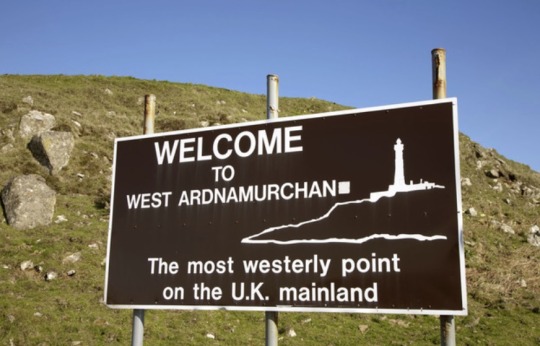


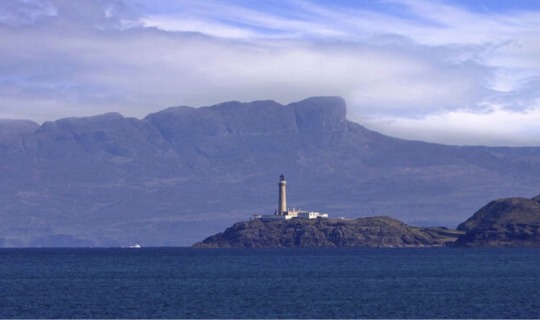
October 5th 1849 saw the lighthouse at Ardnamurchan Point illuminated for the first time.
Another myth buster, the English reading this might be surprised to hear that this is the most westerly point of the UK, not Lizard Point, as stated by various sources, including Wiki, who say “ The Lizard (Cornish: An Lysardh) is a peninsula in southern Cornwall, England, United Kingdom. The most southerly point of the British mainland is near Lizard Point” It’s all bullocks. The most Westerly is actually a rocky outcrop called Corrachadh Mòr, less than a mile from Ardnamurchan Point.
Apart from that the Lighthouse, this is one of the most remote points in Scotland, to reach it you have to drive along a single track road for about 30 miles.
Now onto the place itself, there have been many arguments about this name, two of the most likely are, Point of the sea-hounds or otters, (Airde meaning Point, Muirchu meaning sea-hound or otters) and the Point of the pirates or wreckers (where the “col” from Muirchol means wickedness).
The site for the lighthouse was chosen in 1845 and 20 acres of land was bought for the sum of £20.00. The land was owned by Mr Alexander Cameron who was also paid, rather grudgingly, £58.00 for any inconvenience during building operations. It was designed by Alan Stevenson, one of the Stevenson dynasty of lighthouse engineers who between them were responsible for building 97 lighthouses in Scotland.
Yes it’s remote, but back in the 19th century it would have seemed even more so, during the three years it took to build the Lighthouse, scurvy broke out among the workmen and a doctor had to be called in to treat them, we could have done with Dr James Lind, the subject of yesterdays post to help with that!
On completion two lighthouse keepers were appointed at a yearly allowance of £18.00. They kept at the station two cows and about a dozen sheep.
The lighthouse wasn’t without incident, during a storm in 1852 lightning struck the tower causing broken panes and plaster to come off the walls. Fifty feet of boundary wall was knocked down and 40 feet of road was washed away by the heavy seas. The keepers boat was broken up although they had secured it 15 feet above the last known high water mark.
1988 saw the lighthouse automated, my Uncle Eric was among the electricians tasked with doing this to over 200 structures around Scotland.
Ardnamurchan Lighthouse itself stands 36m high, and its top is 55m above sea level. Getting to the top requires climbing 152 steps, plus two ladders: the first to reach the room with the controls and access to the outside balcony, and the second to reach the light room itself. The views from the top are said to be “utterly magnificent”, on a clear day you can see the Isle of Barra, over 50 miles away.
42 notes
·
View notes